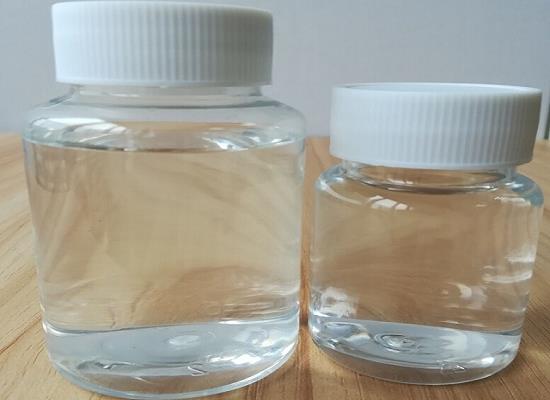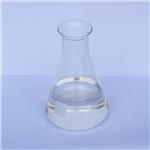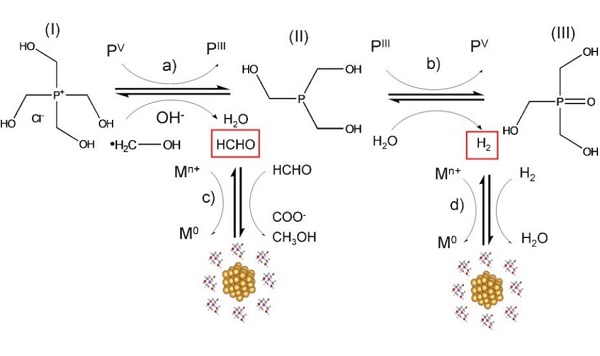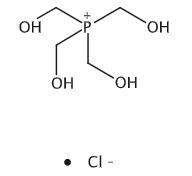Tetrakis(hydroxymethyl)phosphonium Chloride: Applications as Covalent Cross-Linking Agent and Health Hazards
General Description
Tetrakis(hydroxymethyl)phosphonium chloride is a versatile inorganic salt with wide applications in industries such as water treatment, medicine, catalysis, and material science due to its reactivity, water solubility, and chelating properties. Tetrakis(hydroxymethyl)phosphonium chloride is also utilized as a cross-linking agent in cell encapsulation within protein-based hydrogels, offering control over gelation times and mechanical properties while ensuring compatibility with cells. Despite its benefits, Tetrakis(hydroxymethyl)phosphonium chloride poses health hazards like acute toxicity, environmental risks, and potential systemic toxicity. Therefore, strict handling protocols are crucial to mitigate these dangers effectively and safely utilize Tetrakis(hydroxymethyl)phosphonium chloride in various industrial processes.

Figure 1. Tetrakis(hydroxymethyl)phosphonium chloride
Overview
Tetrakis(hydroxymethyl)phosphonium chloride is a versatile organophosphorus compound with a broad range of applications. This inorganic salt exhibits a unique combination of properties, making it a valuable addition to various industrial processes. Tetrakis(hydroxymethyl)phosphonium chloride is renowned for its high reactivity and excellent water solubility, enabling it to be easily incorporated into aqueous systems. Moreover, its multiple hydroxymethyl groups confer unique chelating and complexing abilities, allowing it to interact effectively with a wide array of metal ions. This property is particularly useful in water treatment, where Tetrakis(hydroxymethyl)phosphonium chloride can effectively bind and remove heavy metals and other contaminants from aqueous solutions. Additionally, Tetrakis(hydroxymethyl)phosphonium chloride finds application in the fields of medicine, catalysis, and material science, owing to its ability to modify the properties of various materials. Its biocompatibility and low toxicity also contribute to its widespread use in biomedical applications. In summary, Tetrakis(hydroxymethyl)phosphonium chloride is a multifaceted compound with numerous beneficial properties that make it an indispensable tool in various industries. 1
Applications as Covalent Cross-Linking Agent
Tetrakis(hydroxymethyl)phosphonium chloride is introduced as a versatile covalent cross-linking agent for cell encapsulation within protein-based hydrogels. In the realm of tissue engineering, where mimicking native tissue environments is crucial for cell-matrix interactions, protein-based hydrogels offer an ideal platform. The process of hydrogel formation for cell encapsulation requires mild and cell-compatible cross-linking methods. While various chemical cross-linkers exist, the challenge lies in identifying cytocompatible options to enhance design flexibility. Tetrakis(hydroxymethyl)phosphonium chloride emerges as a cost-effective, amine-reactive cross-linker suitable for 3D cell encapsulation in protein-based hydrogels. Its versatility is demonstrated through its reactivity with primary and secondary amines, allowing for tailored gelation times (6.7 ± 0.2 to 27 ± 1.2 min) and mechanical properties (storage moduli ∼250 Pa to ∼2200 Pa) when combined with recombinant elastin-like proteins. Moreover, Tetrakis(hydroxymethyl)phosphonium chloride exhibits cytocompatibility, enabling cell growth and differentiation within elastin-like protein hydrogels for various cell types, including embryonic stem cells and neuronal cells. This study underscores the significance of Tetrakis(hydroxymethyl)phosphonium chloride as a practical and widely applicable cross-linker for advancing protein-based materials in cell encapsulation applications. 2
Health Hazards
Tetrakis(hydroxymethyl)phosphonium chloride poses significant health hazards across various exposure routes. Classified as corrosive to metals, it presents acute toxicity risks upon ingestion, skin contact, and inhalation. Exposure can lead to severe skin burns, eye damage, and irritation, as well as allergic skin reactions. Inhalation may induce allergy or asthma symptoms and breathing difficulties. Moreover, Tetrakis(hydroxymethyl)phosphonium chloride exhibits high toxicity to aquatic life, with both acute and long-term effects, posing environmental risks. Tetrakis(hydroxymethyl)phosphonium chloride's decomposition, especially under heat, releases highly toxic fumes such as phosphine, formaldehyde, and hydrogen chloride, further exacerbating its hazardous nature. Additionally, its combustibility adds fire hazards to its profile. Studies suggest rapid environmental degradation, although Tetrakis(hydroxymethyl)phosphonium sulfate (THPS), a related compound, has shown sensitization effects in animal testing. Repeated high oral doses in rodents have resulted in liver damage and paralysis, highlighting its systemic toxicity. In summary, Tetrakis(hydroxymethyl)phosphonium chloride demands stringent handling measures to mitigate its severe health risks to both humans and the environment. 3
Reference
1. Tetrakis(hydroxymethyl)phosphonium chloride. National Center for Biotechnology Information. 2024; PubChem Compound Summary for CID 31298.
2. Cindy C, Sarah CH, Kyle JL. Tetrakis(hydroxymethyl) Phosphonium Chloride as a Covalent Cross-Linking Agent for Cell Encapsulation within Protein-Based Hydrogels. Biomacromolecules. 2012; 13(12): 3912-3916.
3. TETRAKIS(HYDROXYMETHYL)PHOSPHONIUM CHLORIDE. CAMEO Chemicals. 20503.
Related articles And Qustion
See also
Lastest Price from Tetrakis(hydroxymethyl)phosphonium chloride manufacturers

US $1.00-4.00/KG2025-05-14
- CAS:
- 124-64-1
- Min. Order:
- 1KG
- Purity:
- 99%
- Supply Ability:
- 200000KG

US $0.00-0.00/KG2025-04-15
- CAS:
- 124-64-1
- Min. Order:
- 1KG
- Purity:
- 99%
- Supply Ability:
- 500000kg




